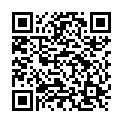|
|
|
| Module code: MST502 |
|
3V+1PA (4 hours per week) |
|
4 |
| Semester: 5 |
| Mandatory course: yes |
Language of instruction:
German |
Assessment:
Written exam, project work
[updated 06.08.2012]
|
MST502 Mechatronics and Sensor Technology, Bachelor, ASPO 01.10.2005
, semester 5, mandatory course
|
60 class hours (= 45 clock hours) over a 15-week period.
The total student study time is 120 hours (equivalent to 4 ECTS credits).
There are therefore 75 hours available for class preparation and follow-up work and exam preparation.
|
Recommended prerequisites (modules):
MST406 Systems Theory
[updated 06.08.2012]
|
Recommended as prerequisite for:
MST601 Control Engineering II
[updated 12.08.2012]
|
Module coordinator:
Prof. Dr. Benedikt Faupel |
Lecturer: Prof. Dr. Benedikt Faupel
[updated 01.10.2005]
|
Learning outcomes:
Students will be taught how to handle and apply system-theoretical methods for solving practical control problems. The focus of this module will be on selecting suitable control strategies and on tuning controllers. After completing this course, students will understand and be able to apply solutions in which they select and adjust appropriate control circuits that integrate suitable sensors and actuators.
[updated 06.08.2012]
|
Module content:
1. Introduction and fundamentals of analogue control engineering
Closed-loop control elements and block diagrams
Definitions, standards and nomenclature, distinction between open- and closed-loop control
Examples of practical implementations of closed-loop control systems in process plants
Continuous control
Introduction to the PID controller
The P-controller
The I-controller
The D-controller
The PI controller
The PD controller
2. Analysis of closed-loop control systems
Static and dynamic behaviour of closed-loop control systems
Setpoint and interference response
Determination of the stationary deviation for various input signal characteristics
3. Design, adjustment and optimization of controllers in the time domain
Tuning closed-loop control systems to give a defined damping response
Tuning closed-loop control systems using the Ziegler-Nichols, Chiens, Hrones and Reswick methods
Tuning using the T-sum rule
4. Design, tuning and optimization of closed-loop controllers using the frequency response plot method
The root-locus method
Phase margin and gain margin tuning
Tuning closed-loop control parameters in Bode plots
Tuning via the symmetric optimum principle and optimum amplitude methods
5. Electronic controllers with op amps
Basic circuits
Example circuits for elementary transfer elements
6. Discontinuous control (two-position and three-position controllers)
Time response
Optimization / Tuning of discontinuous controllers
7. Introduction to and use of MATLAB/SIMULINK
[updated 06.08.2012]
|
Teaching methods/Media:
Faupel, B. Lecture notes to “Control Engineering 1”
Example applications in Matlab/Simulink
[updated 06.08.2012]
|
Recommended or required reading:
Unbehauen, H.: Regelungstechnik I; 11. Auflage; Vieweg Verlag, Braunschweig; 2001
Lutz, H.; Wendt, W.: Taschenbuch der Regelungstechnik; 3. Auflage; Verlag Harri Deutsch, Frankfurt/Main 2000
Föllinger, O.: Regelungstechnik; 8. Auflage; Hüthig Verlag, Heidelberg 1994
Meyr, H.: Regelungstechnik und Systemtheorie. Wissenschaftsverlag Mainz, Aachen, 2000
Samal, E.; Becker, W.: Grundriss der praktischen Regelungstechnik. Oldenbourg Verlag, München 1996
L. Merz; H. Jaschek: Grundkurs der Regelungstechnik, Oldenbourg Verlag, München, 1985
H. Jaschek; W. Schwimm: Übungsaufgaben zum Grundkurs der Regelungstechnik, Oldenbourg Verlag, München 1993
Leonard, W.: Einführung in die Regelungstechnik; 6. Auflage. Vieweg Verlag, Braunschweig 1992
Grupp F.; Grupp F. Matlab 6 für Ingenieure. Oldenbourg Verlag, München 2002
[updated 06.08.2012]
|


